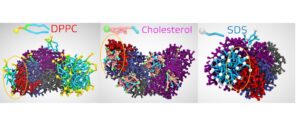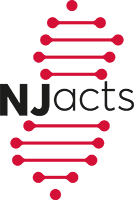Alex Neimark, Distinguished Professor of Chemical and Biochemical Engineering, Rutgers – New Brunswick, has received a $500,000 NSF award “Multiscale Modeling of Coronavirus Virions in the Respiratory System”. This new NSF award will contribute into multifaceted Rutgers efforts in COVID-19 research. For the first time, the methods of nanoscale interfacial engineering will be applied to study interactions of coronavirus virions with pulmonary and exogeneous surfactants that may inform ongoing clinical search for surfactant therapies. This research has been initiated by Dr. Neimark and his postdoc Dr. Santo with the help of the NJACTS Pilot Grant “Development of Computational Models to Explore Interactions of Coronavirus Virions with Lung Surfactant Films “ awarded in 2021. The aim of research is to study in detail and on a molecular level how SARS-CoV-2 and its variants adhere to the lung surfactant film, how the virus is capable of passing through the lipid membranes, and how surfactant molecules, either those that belong to the lung surfactant film or exogenous ones, affect this process. Atomistic and coarse-grained molecular dynamics simulations are applied to reveal the pathophysiological behavior of an entire coronavirus particle as it interacts with the lung surfactant layer. The potential to inform the search for novel therapeutic pathways that inhibit coronavirus activity by using exogenous surfactants endows the research with an interdisciplinary scope. The computational efforts of Dr. Neimark are leveraged by collaborations with Dr. Andrew Gow (EMSOP) and Dr. Jared Radbel (HWJMS) who provide clinical pulmonary expertise for the evaluation of the practical significance of the computational models and simulation data.

Figure. Snapshots of surfactant adsorption on S1 domain of Spike protein showing formation of surfactant aggregates coating specific S1 subdomains ( NTD-purple, RBM-red, RBD-ice blue). From left to right: DPPC, Cholesterol, SDS. Surfactant molecules are distinguished by distinct heads and tails. Encircled are surfactants aggregates on RBM sub-domain responsible for binding with ACE2 cell receptors. Coarse-grained MD simulations by Dr. Santo. Questions to answer: Can surfactant adsorption inhibit virion binding with ACE2? Which surfactant may be more efficient in blocking RBM?
